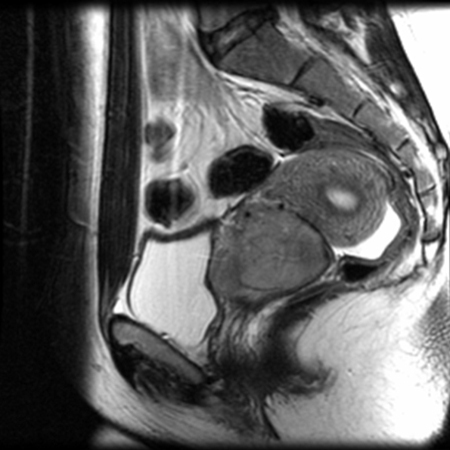Summary
Definition
History and exam
Key diagnostic factors
- abnormal vaginal bleeding
- postcoital bleeding
- pelvic or back pain
- dyspareunia
- cervical mass
- cervical bleeding
Other diagnostic factors
- mucoid or purulent vaginal discharge
- bladder, renal, or bowel obstruction
- bone pain
Risk factors
- human papillomavirus (HPV) infection
- age group
- HIV infection
- early onset of sexual activity (younger than 18)
- multiple sexual partners
- cigarette smoking
- immunosuppression
- history of STI
- oral contraceptive pill use
- high parity
- uncircumcised male partner
- micronutrient malnutrition
- low serum folate
- low vitamin C and E levels
- alcohol use
- low socioeconomic status
Diagnostic tests
1st tests to order
- vaginal or speculum examination
- colposcopy
- biopsy
- human papillomavirus (HPV) testing
Tests to consider
- CBC
- renal function testing
- liver function tests
- chest x-ray
- intravenous pyelogram
- renal ultrasound
- barium enema
- sigmoidoscopy
- cystoscopy
- MRI pelvis
- PET whole body
- PET/CT whole body
- CT of chest/abdomen/pelvis with intravenous/oral contrast
- molecular testing
Treatment algorithm
Contributors
Authors
Richard T. Penson, MD, MRCP

Clinical Director
Medical Gynecologic Oncology
Division of Hematology Oncology
Massachusetts General Hospital
Boston
MA
Disclosures
RTP reports serving on scientific advisory boards for AstraZeneca, Eisai, GSK Inc., ImmunoGen Inc., Merck & Co., Mersana, Novocure, Roche Pharma, Sutro Biopharma, Vascular Biogenics Ltd; data and safety monitoring boards for AstraZeneca and Roche Pharma; institutional research funding (as Principal Investigator) for Array BioPharma Inc., AstraZeneca, Eisai Inc., Genentech Inc., Regeneron, Sanofi-Aventis US LLC, Tesaro Inc., Vascular Biogenics Ltd; and royalties from BMJ Publishing, UptoDate, Elsevier Ltd, Wolters Kluwer Health, and Wiley-Blackwell.
Andrea L. Russo, MD
Director
Gynecologic Radiation Oncology
Associate Clinical Director
Department of Radiation Oncology
Massachusetts General Hospital
Boston
MA
Disclosures
ALR declares that she has no competing interests.
Acknowledgements
Dr Richard T. Penson and Dr Andrea L. Russo would like to gratefully acknowledge Dr Larissa J. Lee, their co-contributor who is sadly deceased, and to acknowledge Dr Neil S. Horowitz and Dr Anthony H. Russell, previous contributors to this topic.
Disclosures
NSH and AHR declare that they have no competing interests.
Peer reviewers
Tracilyn Hall, MD
Assistant Professor of Gynecologic Oncology
Dan L Duncan Comprehensive Cancer Center
Baylor College of Medicine Houston
Houston
TX
Disclosures
TH declares that she has no competing interests.
Linda Yang, MD
Fellow
Minimally Invasive Gynecologic Surgery
Magee Women's Hospital
University of Pittsburgh Medical Center
PA
Disclosures
LY declares that she has no competing interests.
Deirdre Lyons, MB, BCh, BAO, MRCOG
Consultant in Obstetrics & Gynaecology
Lead Clinician in Colposcopy
Imperial College Healthcare NHS Trust
London
UK
Disclosures
DL declares that she has no competing interests.
References
Key articles
Marth C, Landoni F, Mahner S, et al. Cervical cancer: ESMO clinical practice guidelines for diagnosis, treatment and follow-up. Ann Oncol. 2017 Jul 1;28(suppl 4):iv72-83.Full text Abstract
Fontham ETH, Wolf AMD, Church TR, et al. Cervical cancer screening for individuals at average risk: 2020 guideline update from the American Cancer Society CA Cancer J Clin. 2020 Sep;70(5):321-46.Full text Abstract
Bhatla N, Aoki D, Sharma DN, et al. Cancer of the cervix uteri: 2021 update. Int J Gynaecol Obstet. 2021 Oct;155 Suppl 1(suppl 1):28-44.Full text Abstract
National Comprehensive Cancer Network. NCCN clinical practice guidelines in oncology: cervical cancer [internet publication].Full text
Reference articles
A full list of sources referenced in this topic is available here.
Use of this content is subject to our disclaimer
